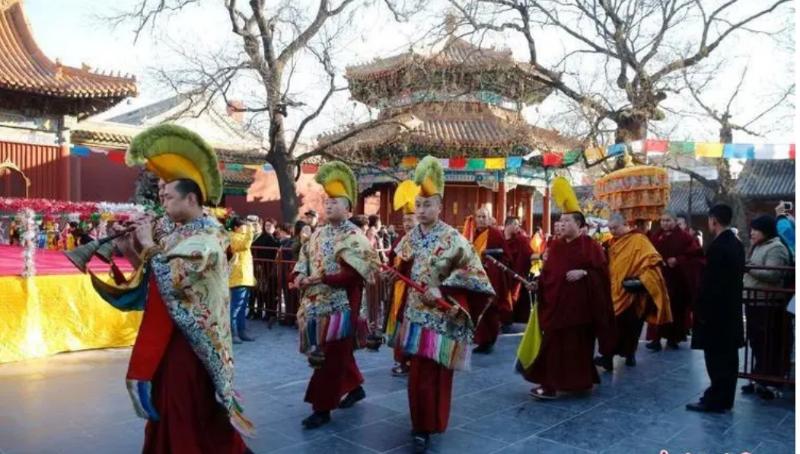Religious Rituals at Yonghe Temple: Sacred Ceremonies Passed Down for Millennia
As the lunar New Year approaches each year, Yonghe Temple begins preparations for its annual religious rituals, which are sacred activities steeped in millennia of history. Among these, the most notable is the "dispelling of evil spirits" ceremony, which traces its origins back to the early 8th century AD and is one of the significant rituals of the Gelug sect of Tibetan Buddhism.

Reference: Yonghe Temple: A Cultural Gem of Buddhism in Beijing
Origin of the Dispelling of Evil Spirits Ceremony
The dispelling of evil spirits ceremony originated in Tibetan Buddhism, first appearing in the early 8th century AD. However, it was during the 15th century AD that Tsongkhapa, the founder of the Gelug sect of Tibetan Buddhism, made important modifications and enhancements to the ritual. Over time, this ceremony evolved into an indispensable part of the grand rituals of the temple.
Spread in Beijing during the Ming and Qing Dynasties
After being introduced to Beijing towards the end of the Ming Dynasty, the dispelling of evil spirits ceremony received further promotion from the Qing imperial court. During the Qing Dynasty, this ceremony became one of the important annual events held in the Forbidden City and gradually evolved into one of the iconic religious rituals of Yonghe Temple.
Specifics of the Ceremony
The dispelling of evil spirits ceremony involves a rich variety of religious rituals and prayers aimed at purifying the hearts of believers, dispelling ominous energies, and blessing all sentient beings with peace. Usually presided over by eminent monks, participants include believers from various regions and devout pilgrims.
Significance of the Ceremony
This ceremony is not only an expression of religious faith but also a continuation and promotion of cultural traditions. By participating in the dispelling of evil spirits ceremony, believers not only find spiritual comfort and blessings but also experience the power of religious culture and the profound historical heritage.
The Blend of Tradition and Modernity in Yonghe Temple's Dispelling of Evil Spirits Ceremony
Today, with the development of society and the advancement of civilization, Yonghe Temple's dispelling of evil spirits ceremony has moderately incorporated modern elements while preserving tradition. For example, the use of electronic audio equipment and live streaming on the internet allows more people to participate in this ancient and sacred ritual.
Questions and Answers:
-
What modifications did Tsongkhapa, the founder of the Gelug sect, make to the dispelling of evil spirits ceremony?
Tsongkhapa made significant modifications and enhancements to the dispelling of evil spirits ceremony during the 15th century AD, refining its rituals and practices within the Gelug sect of Tibetan Buddhism.
-
How has the dispelling of evil spirits ceremony at Yonghe Temple evolved over time to adapt to modernity?
Yonghe Temple's dispelling of evil spirits ceremony has embraced modernity while retaining its traditional essence. Incorporating elements like electronic sound systems and online streaming, the ceremony now engages a broader audience, blending ancient rituals with contemporary technology.
note: This return of all, without the author's permission, may not be reproduced